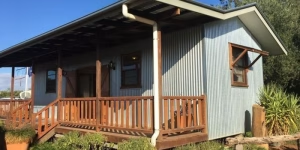Discover expert tips on how to find a good interior designer in Kenya. Learn what to consider, where to look, and how to choose the perfect designer for your project.
Introduction
Finding a skilled interior designer in Kenya can transform your space into a stylish and functional haven. Whether you’re designing a home, office, or commercial space, the right designer can bring your vision to life while staying within your budget. This guide covers essential tips to help you find the perfect interior designer in Kenya.
Why Hire an Interior Designer in Kenya?
Hiring a professional interior designer offers several benefits:
- Expertise and Creativity: Designers bring creativity, experience, and industry knowledge.
- Time-Saving: They manage the entire process, saving you time and stress.
- Budget Management: A good designer ensures you get value while staying within budget.
- Access to Resources: Designers have access to exclusive products, skilled contractors, and suppliers.
How to Find a Good Interior Designer in Kenya
1. Define Your Interior Design Needs
Start by identifying the specific areas you want to improve. Determine:
- The style you prefer (modern, rustic, contemporary).
- Your budget and expected timeline.
- The scope of the project (entire house, one room, office space).
2. Conduct Research
Research is crucial to finding a qualified interior designer in Kenya.
- Online Directories: Use platforms like Houzz, ArchDaily, and local Kenyan directories.
- Social Media Platforms: Instagram, Facebook, and Pinterest feature portfolios of Kenyan interior designers.
- Websites: Check designers’ websites for portfolios, client reviews, and contact information.
3. Ask for Recommendations
Seek referrals from friends, family, and colleagues who have worked with designers. This provides firsthand insights into the designer’s professionalism, quality of work, and communication style.
4. Check Credentials and Experience
Verify the designer’s qualifications and industry certifications. Look for:
- Educational Background: Degrees in interior design or related fields.
- Professional Memberships: Membership in associations like the Interior Designers Association of Kenya (IDAK).
- Experience: Look for a portfolio showcasing previous projects similar to yours.
5. Review Portfolios
Examine portfolios for design styles, creativity, and attention to detail. A strong portfolio should showcase:
- Variety in design styles.
- Successful completion of similar projects.
- Before-and-after photos demonstrating transformation.
6. Conduct Interviews
Shortlist 3-5 interior designers and schedule consultations. Ask the following questions:
- What’s your design process?
- How do you handle budgets and timelines?
- Can you provide references from past clients?
- How involved will I be in the design process?
7. Evaluate Communication Skills
Good communication is key to a successful interior design project. Look for a designer who listens to your ideas, provides suggestions, and keeps you updated throughout the project.
8. Compare Costs and Services
Get detailed quotes from each designer. Compare:
- Design fees (hourly or fixed rate).
- Additional costs (consultation, materials, project management).
- Payment schedules and contract terms.
9. Check Client Testimonials and Reviews
Read client reviews on Google, social media, and business directories. Look for consistent positive feedback about:
- Quality of work
- Timely project completion
- Professionalism and customer service
10. Sign a Detailed Contract
Before hiring a designer, ensure a formal contract is in place. The contract should include:
- Scope of work
- Project timeline
- Budget and payment terms
- Termination clauses and warranties
Top Interior Design Styles in Kenya
Here are popular design styles you might consider for your space:
- Modern Minimalist: Clean lines, neutral colors, and open spaces.
- Contemporary: A blend of current trends with timeless designs.
- Rustic African: Natural materials, warm earth tones, and handmade décor.
- Industrial: Exposed brick, metal fixtures, and raw wood finishes.
- Coastal Chic: Light, airy spaces inspired by Kenya’s stunning coastlines.
Where to Find Reputable Interior Designers in Kenya
- Interior Design Firms: Established firms with strong portfolios.
- Freelance Designers: Independent professionals with creative projects.
- Design Schools: Graduates from reputable Kenyan design institutions.
Final Verdict
Finding a good interior designer in Kenya requires thoughtful research and clear communication. Define your needs, evaluate portfolios, compare quotes, and sign a detailed contract. By following these steps, you’ll be well-equipped to hire a professional who will transform your space into a stylish and functional masterpiece.
Pros and Cons of Hiring an Interior Designer in Kenya
Pros:
- Professional expertise and creativity
- Access to quality materials and contractors
- Efficient project management
Cons:
- Design fees can be high for complex projects
- Potential communication challenges if expectations aren’t clear
Related: How to Find the Best Fundi wa Simu in Kenya
FAQs about Hiring an Interior Designer in Kenya
- How much do interior designers charge in Kenya?
Interior design fees vary based on project size and designer experience. Expect charges ranging from KES 1,500 to KES 10,000 per square meter. - How long does an interior design project take?
Project timelines depend on complexity but typically range from 4-12 weeks for residential projects. - What should be included in an interior design contract?
A good contract should cover the scope of work, timeline, payment terms, budget, and project termination clauses. - Can I be involved in the design process?
Yes, most designers encourage client input during concept development and material selection phases. - Where can I find the best interior designers in Kenya?
Look for reputable firms, freelance designers, and design school graduates through online directories, social media, and personal referrals.





